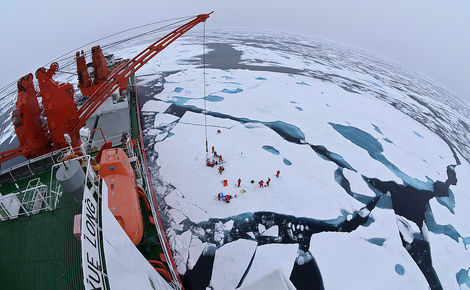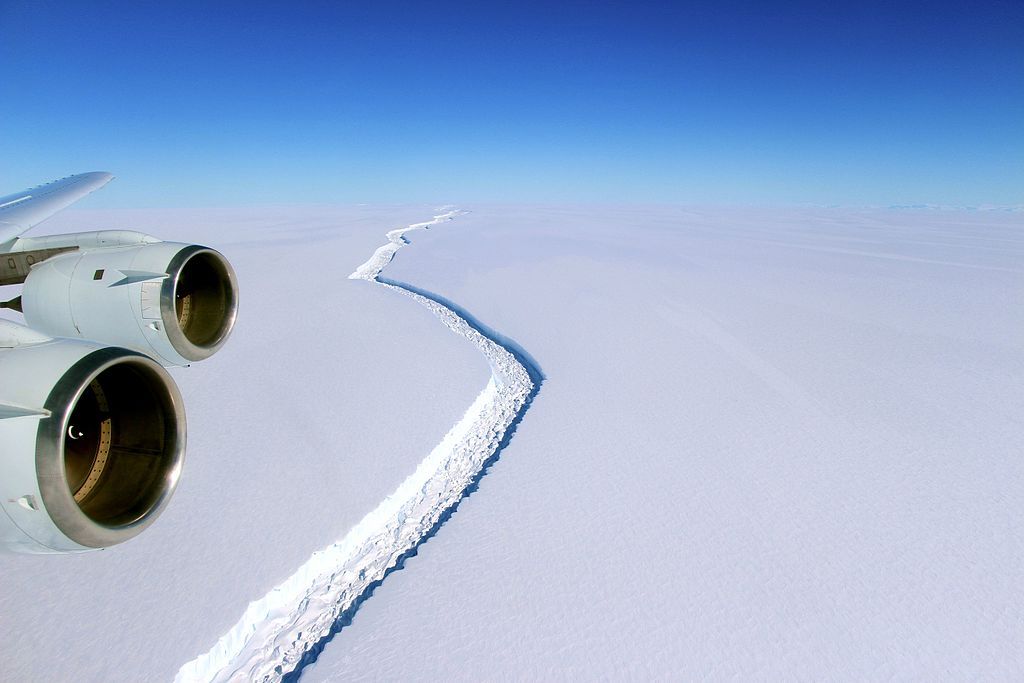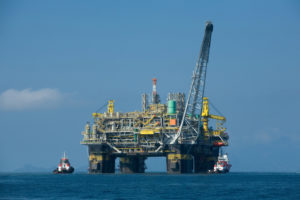With its growing economic power China is willing, more than ever before, to contribute to addressing global challenges. But what happens when competing economic interests are a source of potential conflict? One such test for China’s role as a global leader will be its approach to governance in the polar regions, which are becoming more open to economic activity as a result of a warming climate.
Climate change has significantly impacted the polar regions. Two segments of the giant Larsen Ice Shelf along the east coast of the Antarctic Peninsula – Larsen A and Larsen B collapsed in 1995 and 2002, while the last piece Larsen C now has a dreadful crack 175 kilometres long.
The crack in Larsen C provides a vivid illustration of the seriousness and global nature of environmental crises in the Anthropocene. Drivers of environmental change such as greenhouse gas emissions now have a demonstrable impact on the most remote corners of the planet. In turn, accelerated ice-melt in the polar regions will contribute to sea level rise. This could hit coastal economic hubs such as Shanghai in the future.
Against this backdrop, China has signalled a strong interest in Antarctica. In its 13th Five-Year Plan (2016-2020), the government declared its political intention to be involved in the governance of “new” fields, including cyber security, the deep seabed, polar regions and outer space. To date, China has undertaken 33 national Antarctic expeditions and runs four research stations in Antarctica with a fifth station under construction.
China has also started the construction of a new icebreaker, which is scheduled for her maiden voyage in 2019. And in May 2017, China will host the Antarctic Treaty Consultative Meeting (ATCM) for the first time. This is the annual meeting for all parties of the Antarctic Treaty.
However, it is still unclear what China’s Antarctic ambitions are and how the country plans to achieve them. There are a number of potential avenues.
Existing protections
The Antarctic and Southern Ocean are governed by an extensive regime called the Antarctic Treaty System (ATS). At its centre is the Antarctic Treaty, which was adopted in 1959, and devotes the continent to peace and scientific research. The ATS also comprises the 1972 Convention on the Conservation of Antarctic Seals, the 1980 Convention for the Conservation of Antarctic Marine Living Resources, the 1991 Environmental Protocol to the Antarctic Treaty (Madrid Protocol), and the measures in effect under these instruments. The Madrid Protocol established a moratorium for mining in the Antarctic.
The ATS is widely seen as a success of contemporary international law and diplomacy. However, our planet, and our understanding of it, is vastly different from the eras in which many of the Antarctic instruments were concluded.

Arctic Ocean drift ice seen from Chinese icebreaker Xue Long (Snow Dragon) Image: Timo Palo
A new frontier
Climate change is making Antarctica more accessible to human activities, such as shipping, fisheries, tourism and bio-prospecting. This is entwined with the rise of China, which is now the second largest economy in the world. The international legal regime that governs the Antarctic needs to evolve to respond to these environmental and political changes.
A current example of how governance is responding is the negotiations within the Commission for the Conservation of Antarctic Marine Living Resources on the establishment of marine protected areas in the Southern Ocean. Another development of the current regime is the regulation of maritime activities through the adoption of the International Code for Ships Operating in Polar Waters (Polar Code) in the International Maritime Organization.
The Antarctic needs to be sustainably managed by all countries. If China, as a rising power, were eager to expand its influence and deepen its participation in the Antarctic regime, shaping international law towards better protection of the Antarctic environment would be a good place to begin.
Furthermore, China is now the largest producer of marine capture fisheries and the third largest ship-owner in the world. China’s internal activities could cause significant impact outside the country, and even as far away as Antarctica. For example, Chinese krill fishing in Antarctica has grown significantly since 2009, reaching 54,300 tonnes in 2014.
There have also been accidents of Chinese fishing vessels (e.g. Kai Xin, 2013) in the Antarctic that have generated marine pollution concerns. And there is a growing interest in Antarctica in the Chinese tourism market. Therefore, effective regulation of Chinese activities in Antarctica is essential if China is to play a positive role in the Antarctic.
There are several departments of the Chinese government involved in Antarctic affairs, such as the Department of Treaty and Law, Ministry of Foreign Affairs; the Chinese Arctic and Antarctic Administration, which is in charge of China’s scientific research in the polar regions; Maritime Safety Administration – the competent authority for shipping, and the Bureau of Fisheries that is responsible for fisheries management. In order to achieve efficient law enforcement, China needs to better coordinate how these departments manage Antarctic affairs.
The Antarctic is changing fast. This means the Antarctic governance regime needs to evolve to meet the challenges facing this pristine continent. China could play a leading role if it shapes the Antarctic governance regime towards better protection of the globally unique landscapes of Antarctica, and regulates its Antarctic activities effectively.








